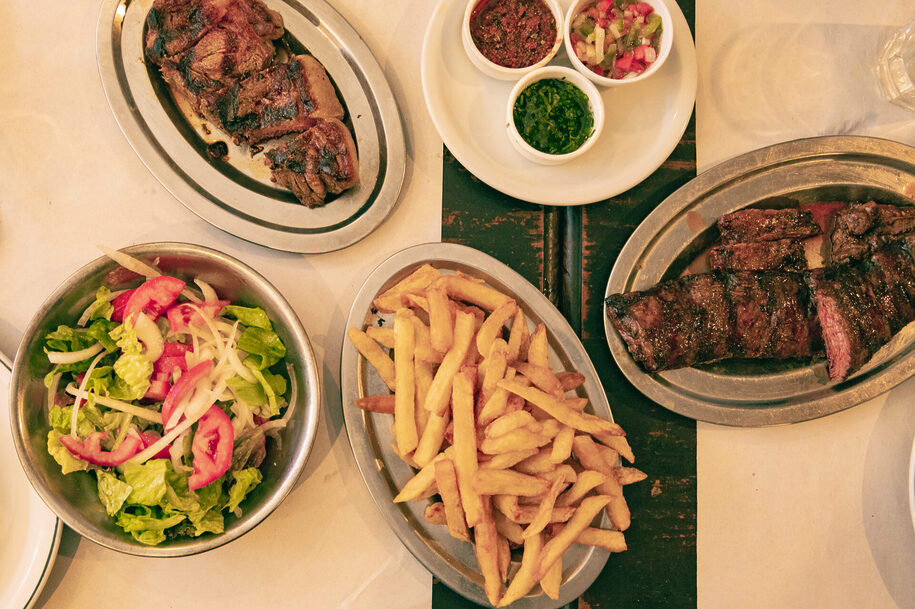Planning on visiting Argentina? Then you should make time to enjoy the local food. There’s a lot more to the local cuisine than red meats and red wines – from hearty dishes from the north like humita to some of the best pizza outside of Italy (and rare offerings like the southern king crab), Argentina’s food is as diverse as the country and its population, not to mention absolutely delicious.
However, it’s hard to know what to order and where to order it if you are not a local, and many visitors miss the chance to try some truly amazing dishes. We put together this guide to give newcomers an idea of what our food is like, how it came to be and, most importantly, how to enjoy it!
Argentinians and Food
Food lies at the heart of the Argentine spirit. The country has had glorious ups and terrible downs, and, all in all, here’s what we have learned: no matter what happens, as long as we have good food on the table, and good friends to share it with, we will get by just fine. If you are lucky enough to visit, by all means, go get a good steak, but remember to bring someone to enjoy it with.
Foods you can’t miss while visiting Argentina
You could spend a lifetime in Argentina and not try everything the country has to offer, but if you are only here for a short time, there are a few essentials you must absolutely try before you leave. If your first stop visiting the country is the capital, be sure to check out our Buenos Aires Food tours – this is a great introduction to Argentina’s culinary scene and the country’s history through a curated selection of local dishes.
The Staples: asado, empanada and malbec
These are the main three things that travelers want to try when visiting Argentina, and rightly so.
Empanadas
Empanadas are a kind of pastry that is typically filled with meat and either baked or fried. There are many other filling options, like Caprese, corn or ham and cheese, to name a few, but most Argentinians will agree that meat is king when it comes to empanadas. Argentinians will either buy them by the dozen to eat at home, make them from scratch or order them at regional restaurants or pizzerias (a pizzeria worth its salt will serve a decent empanada). Different regions have their own style of empanada, with those from Salta and Tucumán being the most renowned.
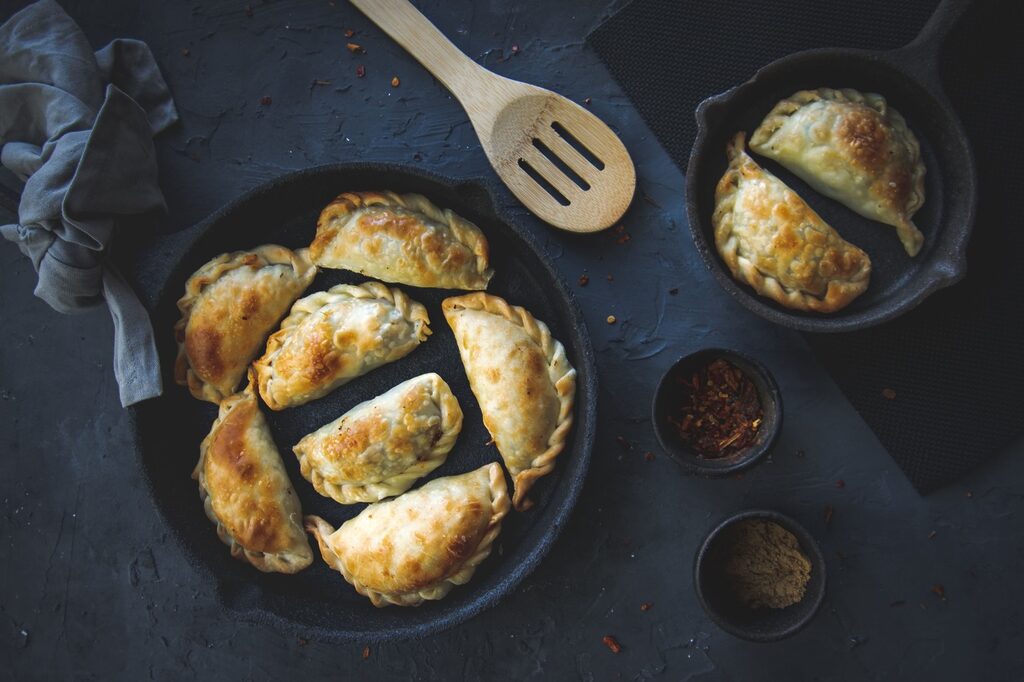
Asado
To translate “asado” as a barbeque would be to it a disservice. An asado is a traditional event in Argentine cuisine, and a social occasion for coming together with family, friends or colleagues. Argentinians will use any occasion to celebrate an asado, usually resulting in a day-long affair that starts in the morning, with the asador preparing the meats as others handle salads, dressings and side dishes.
Achuras (offal) like chorizo, morcilla (black pudding) and mollejas (sweetbread) are served first, while the main cuts are still cooking. Argentinians do not usually season their meat beyond adding salt. A popular sauce to condiment cooked meat is chimichurri, which is made with parsley, garlic, olive oil, peppers, oregano and vinegar. There are other sauces, like salsa criolla, but chimichurri reigns supreme.
The tricky part about enjoying an asado as a foreigner is not finding a place to eat it, but getting the full experience. There are many good parrillas in which one may order an asado at any price range, but it’s not the same as living an asado.
If you cannot befriend an Argentinian during your stay and get them to invite you to one, we recommend you try an experience like Fogón Asado in Buenos Aires, which hosts asados for visitors eager to participate in this much-celebrated tradition.
Malbec
While originally from France, the malbec grape has found a new home in Argentina. The grape thrives in the high-altitude vineyards of the Andes Mountains, where the hot, dry days and cool nights create ideal growing conditions. This climate results in grapes with thick skins and high sugar content, which leads to wines with intense color and flavor.
With this in mind, it’s no wonder malbec has become the country’s most famous wine and an important part of our national identity. Since the exchange rate is usually very favorable to tourists, many visitors can sample some truly incredible wines at very affordable prices.
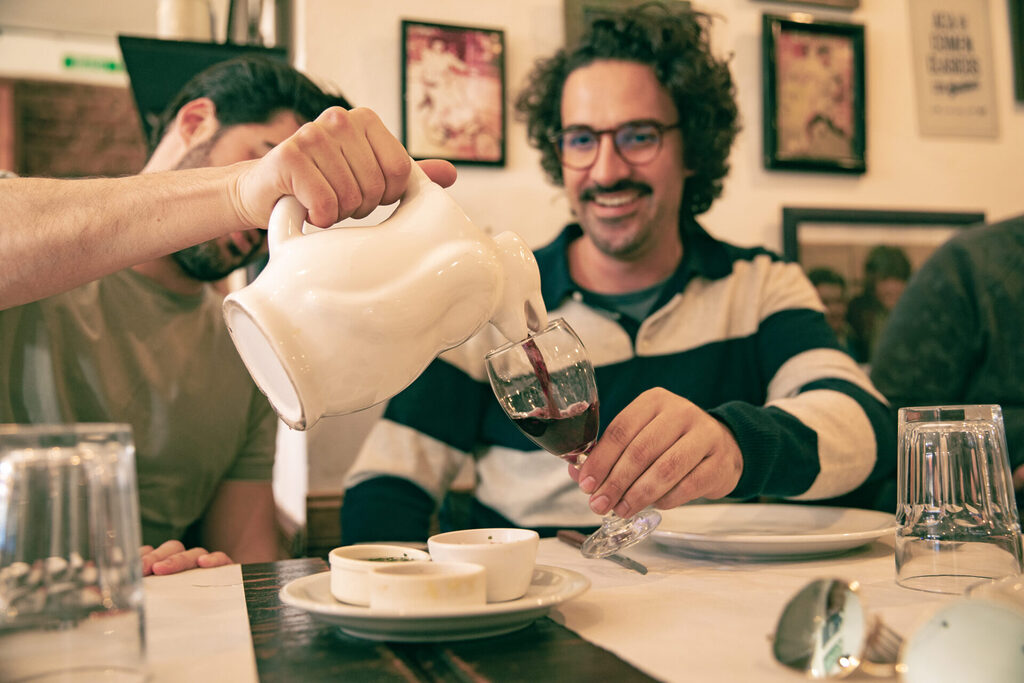
Sweets to try: alfajores, helado and flan
If you have a sweet tooth, you are in for a treat. Before we begin you should know that Argentinians will use any opportunity to feature dulce de leche (milk caramel) in any sweet thing whatsoever, and therefore all three sweets we are about to describe (and most Argentinian desserts) include dulce de leche.
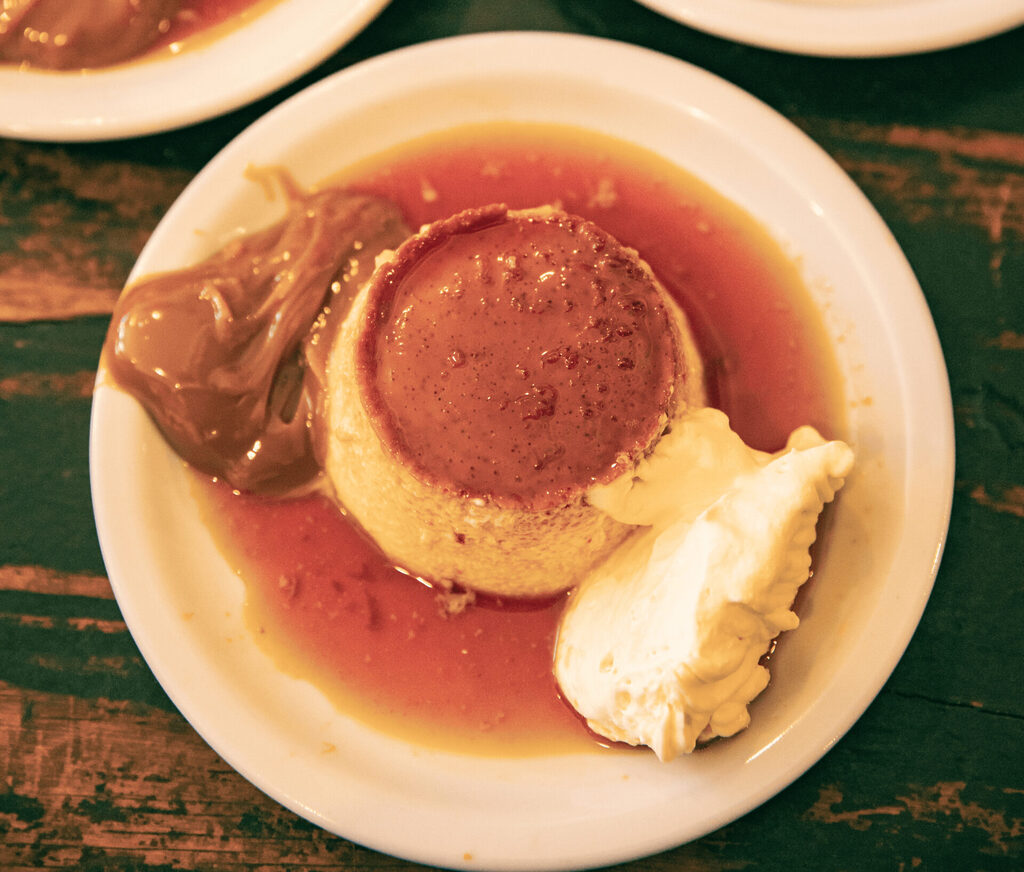
Alfajor
First on the list is the iconic alfajor. This sweet delicacy consists of two shortbread cookies sandwiched together with a creamy filling, typically dulce de leche, and covered in chocolate or powdered sugar. Alfajores can be found in every bakery, café, and supermarket in Argentina, and each region has its own variation of the classic recipe.
Other iterations may feature chocolate or jam as filling. We suggest you try one at a café together with a latte or submarino (a glass of hot milk in which a bar of dark chocolate is melted and stirred with a long spoon). You can also buy alfajores by the box at places like Havanna and Bonafide.
Helado
The history of ice cream in Argentina dates back to the late 19th century when Italian immigrants arrived in the country and brought with them their love of gelato. In fact, many of the ice cream parlors in Argentina are still owned and operated by Italian families who have been making helado for generations.
The Italian influence is evident in the style and flavors of Argentinian ice cream, which is known for its rich, creamy texture and unique flavors. However, the most popular flavor by far is dulce de leche, which is sold either plain or with added ingredients like chocolate, more dulce de leche, cookies or nuts. In Argentina, ice cream is not sold by scoops; you can either buy a vaso (cup), a cucurucho (cone) or even buy ice cream by the kilogram!
PS: We have a thorough Argentine Ice Cream Guide for those with a sweet tooth, plus Buenos Aires ice cream shop recommendations.
Flan
This classic custard dessert is made from a simple mixture of milk, sugar, eggs, and vanilla, and is often served with a drizzle of caramel sauce, dulce de leche and whipped cream. Flan can be found in most restaurants in Argentina, and is a beloved comfort food. In Argentina, the highest compliment you could pay someone regarding their flan is to tell them that it tastes just like your grandmother’s.
Drinks: vermouth, fernet and wines beyond malbec
For a deeper dive into traditional drinks, take a look at our Argentine Drinks guide.
Vermouth
Vermouth, a fortified wine infused with botanicals and spices, has been a traditional drink in Argentina since the 19th century, when it was first introduced by Italian immigrants. It is often served as a refreshing appetizer by adding seltzer, orange slices and ice. Vermouth from Argentina typically has a sweet flavor and can be red or white.
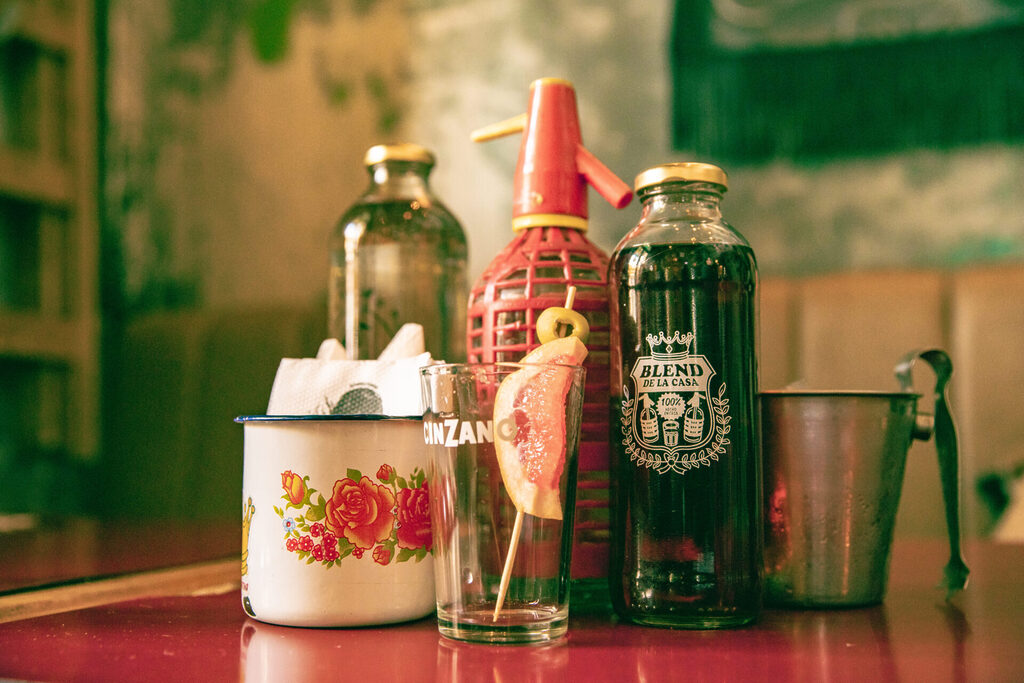
Fernet
The origin of fernet’s immense popularity in Argentina remains a mystery, but there is no doubt about its fame: Argentina consumes about 75% of all fernet consumed globally. This aromatic and bitter spirit is made by blending more than 40 herbs and spices, such as myrrh, saffron, chamomile, and cardamom. Fernet is mostly enjoyed mixed with Coca-Cola, resulting in a (less-bitter) beverage known as fernet con coca.
Wines beyond malbec
Argentina produces a wide range of wine varietals beyond Malbec, some of which have gained international recognition. Among these varietals are Cabernet Sauvignon, Syrah, Torrontés, and Semillón.
These wines are grown in various regions of the country, each with its own unique terroir and microclimate, which contribute to the character of the wine. For example, the Uco Valley in Mendoza is known for producing high-altitude wines with intense fruit flavors, while the Salta region produces Torrontés with floral and citrus notes.
While visiting a local vineyard is definitely the best way to enjoy regional wines, you can always find a good bottle at a winery. There are some truly incredible wines at a decent price point, and some hidden gems that you won’t be able to find abroad.
If you are interested in a wine-tasting experience, our Palermo Food Tour includes a wine-tasting stop in which we sample different wines from around the country. Be sure to check it out!
Regional foods and where to try them
Argentina’s regional cuisine is as diverse as its landscape and population, with each region offering unique flavors and ingredients that reflect the local culture and history. Here are some of the must-try regional dishes and where to find them:
The Northwest: hearty dishes with Andean heritage
This region is known for its hearty and flavorful dishes that have roots in the indigenous cultures of the Andes. Some popular dishes include locro, a stew made with corn, beans, and meat, and tamales, a dish of steamed corn dough filled with meat, vegetables, and spices. A vegetarian option is humita en chala, a dish similar to tamales but filled with corn and cheese.
Try these dishes if you are visiting Salta or Jujuy – it’s always best to ask the locals where to eat, especially in some of the smaller towns like Cafayate, Purmamarca or Tilcara.
The Northeast: Indigenous cuisine with European twist
This region is characterized by the lush nature of its rivers, extensive green fields, and the reddish soil of Misiones. The cuisine of the area is closely connected to the natural surroundings and expresses a unique cultural richness, with a strong influence from the indigenous Guarani culture, as well as more recent European influences.
One must-try dish is chipa, a type of bread made with cassava flour and cheese that is best served warm. Another regional favorite is mbejú, a type of pancake made with cassava flour and filled with cheese or meat. Regional river fish like dorado and surubí are an important – and delicious – part of the local cuisine. Immigrants from Eastern and Central Europe adapted their own recipes to make use of the native ingredients – one such example are vareniki with cassava puree filling.
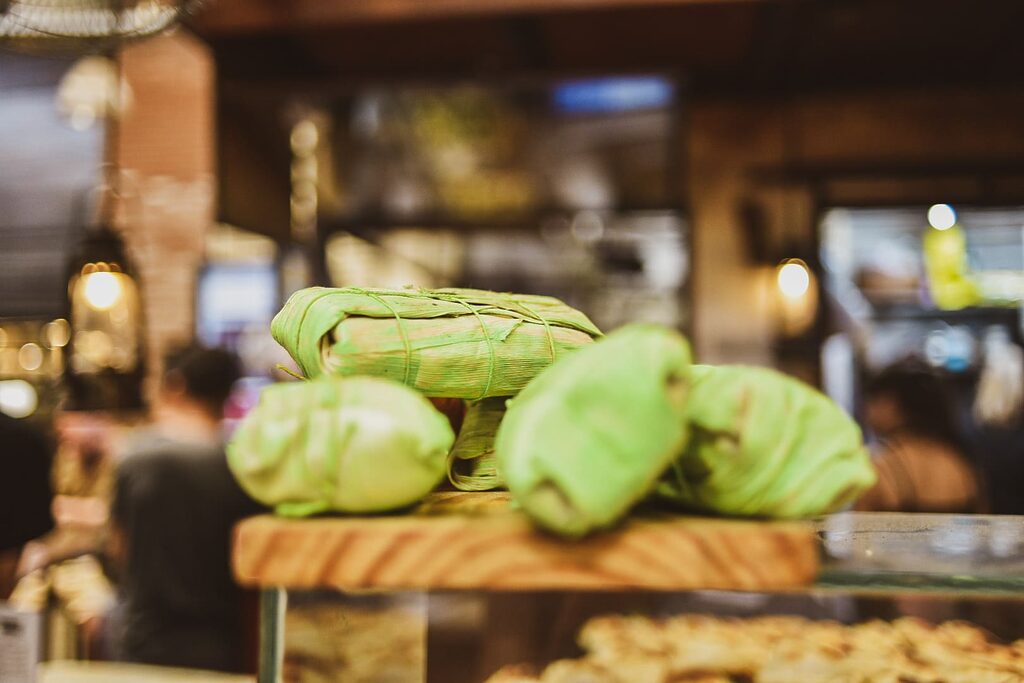
The South: rare meats, seafood and berries
The cuisine in southern Argentina is heavily influenced by the region’s geography and climate, which includes the Andes mountains, vast Patagonian plains, and a long coastline. This region is known for its unique variety of meats, including lamb, goat, guanaco (wild relative of the llama), and wild boar. Seafood, particularly shellfish, is also prominent along the coast.
In addition to meats and seafood, the southern region is known for its use of locally grown produce. Berries and fruits such as rosa mosqueta (rosehip), calafate (barberry), cassis and blackberries are used in jams, liqueurs and syrups. The South is also well-known for its chocolate production, which very often incorporates berries and nuts.
You can enjoy some fantastic chocolate in Bariloche and San Martín de los Andes (if you aren’t visiting the south, we recommend buying some Chocolate at RapaNui in Buenos Aires). If you are itching for seafood, Ushuaia is the place to go (and the best place to try centolla, the southern king’s crab).
What to eat in Buenos Aires
For most tourists, the first stop while visiting Argentina is the capital city of Buenos Aires. The giant metropolis features an impressive culinary scene. Because there’s so many options out there, put together a Buenos Aires Food Guide with our favorite restaurants, experiences and must-try dishes.
For a city dweller – the elusive porteño – what counts as “typical” is not so much the food but the location: bodegones, dinner-style restaurants featuring soccer memorabilia, antique advertisements and old-fashioned decor. Hearty, rustic meals that are deeply rooted in Argentine culinary tradition are served, often featuring simple but flavorful ingredients. Milanesas with mashed potatoes, tortilla and cannelloni are typical bodegón dishes.
Because Buenos Aires is quite large, we recommend picking one neighborhood to explore – the San Telmo old-town and trendy Palermo are the classics, as they feature historical architecture, incredible restaurants and many locations worth visiting. If you are interested in a culinary & sightseeing experience, check out our food tours – they are the perfect introduction to Argentine culture and food scene.
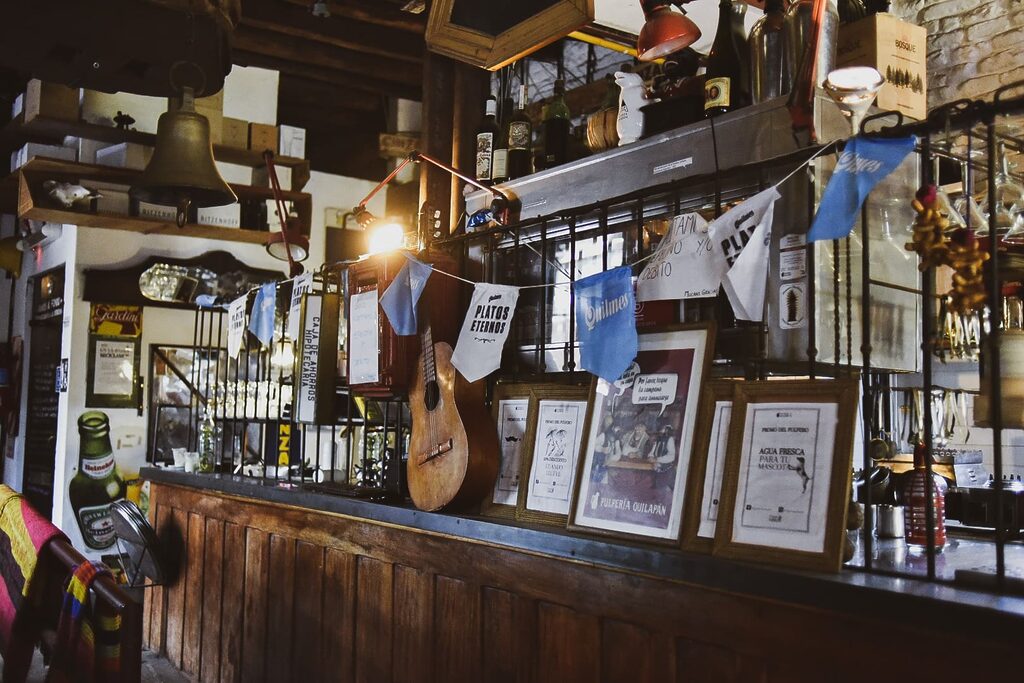
A somewhat brief overview of Argentina’s Food Culture and Diversity
Argentina’s cuisine is a delightful fusion of flavors and influences from various cultures from all over the world, though not all of them receive the same amount of recognition. We can’t do justice to all of them here, but here goes our attempt to explain, in very broad terms, how different cultures came to shape our cuisine.
Spanish and Indigenous influence
The Spanish colonization of Argentina introduced European-style cooking, including the use of olive oil, garlic, and onions, not to mention wine and beef cattle. Ingredients such as maize, potato, cassava, ají, and many others were first used by indigenous nations, who are also to credit for many of Argentina’s typical dishes. Mate tea and chipa (a cheese bread made from cassava flour) can be traced back to the guaraní, for example and hearty humita en chala and tamales are typical from the Andean region, in which folks like the quechua and kolla live.
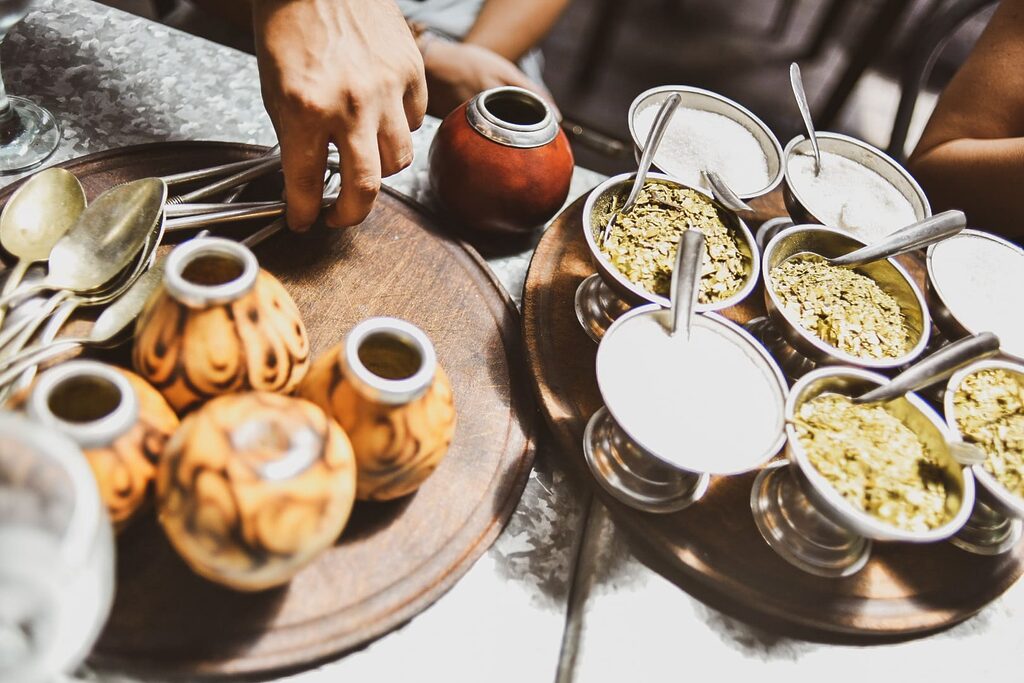
Mestizo and African influence
The gaucho culture, which developed in the countryside, perfected and added grilled meat dishes to the culinary landscape. The first gauchos – horsemen of the Argentine grasslands – were probably mestizos of mixed European and indigenous ancestry.
Different kinds of offal, like chinchulines (small intestines) and mollejas (sweetbreads) were typically prepared and eaten by African slaves and their descendants long before they were claimed as a national dish and an integral part of asado culture.
Italian influence
In addition to these influences, Argentina has experienced waves of immigration from various regions of the world, which have added new dimensions to the country’s cuisine. After the Spanish, the Italians are the most celebrated for their role in shaping Argentine cuisine. Italian immigrants brought the big p’s – pasta and pizza – into the country, as well as many other dishes, drinks and sweets that have become staples in Argentine households.
Other relevant influences in Argentina’s Food Culture
Immigrants from many other regions and cultures further contributed to making Argentine food culture what it is today. Arab, German, Polish, Jewish, Welsh and Polish immigrants, to name a few, have all added their culinary heritage to our national cuisine.
Got questions about Argentina’s food culture? You can contact us via e-mail or social media. If you are coming to Buenos Aires or looking for something to do in town, take a look at our food tours! We promise you a great time, great food and great company.

